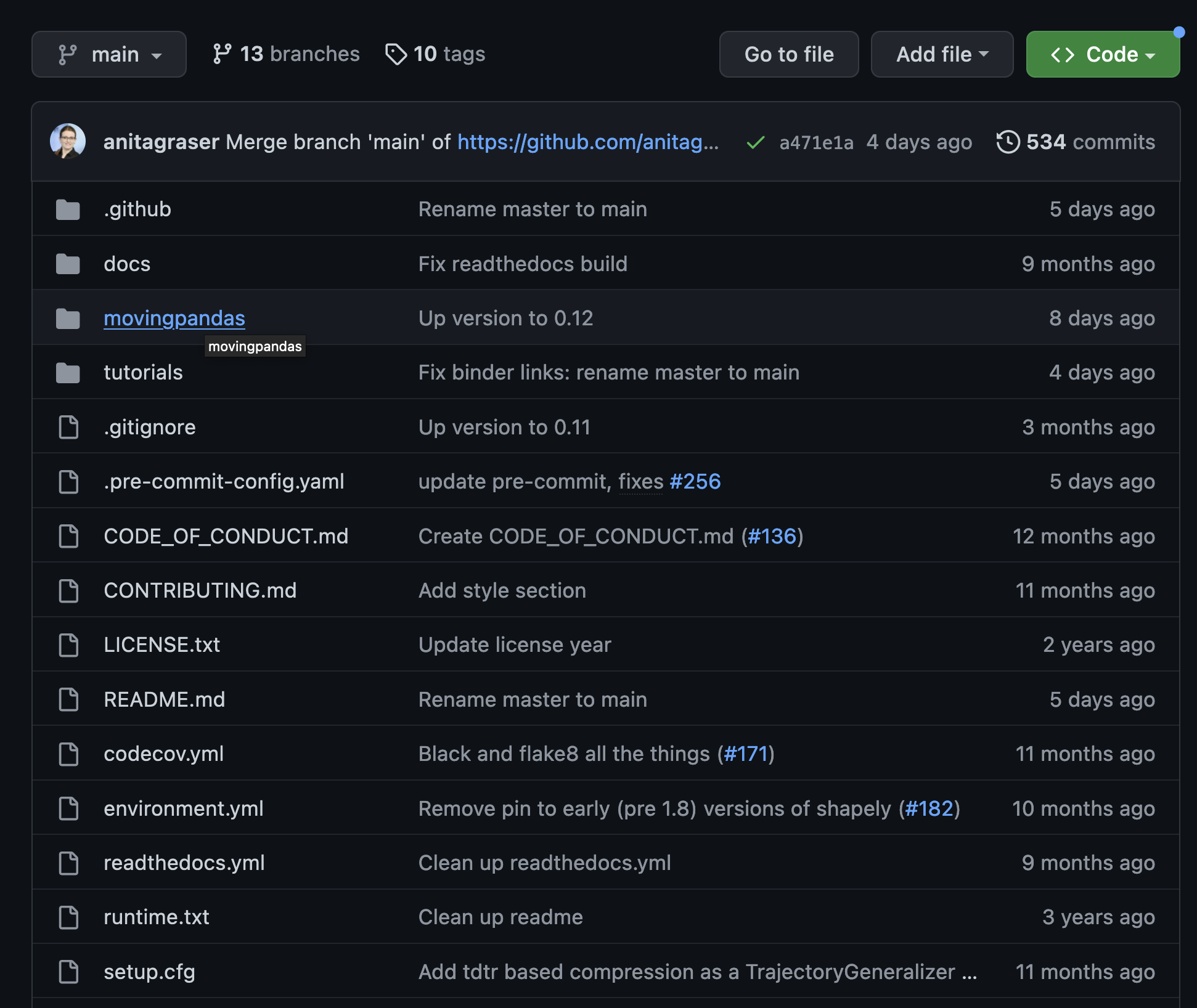Documentation for your Open Source Python Package#
Important
Please note that the tools discussed here are those that we see commonly used in the community. As tools evolve we will update this guide. If you are submitting a package for pyOpenSci peer review and use other tools that are not listed in our guide to build your package you can still submit for review! The tools listed here are suggestions, not requirements. Our requirements are focused on the documentation content of your package.
Documentation is critical for your Python package’s success#
Documentation is as important to the success of your Python open source package as the code itself.
Quality code is of course valuable as its how your package gets the tasks done. However, if users don’t understand how to use your package in their workflows, then they won’t use it.
Further, explicitly documenting how to contribute is important if you wish to build a base of contributors to your package.
Two types of Python package users#
The documentation that you write for your package should target two types of users:
1. Basic Tool Users#
Basic tool users are the people who will use your package code in their Python workflows. They might be new(er) to Python and/or data science. Or expert programmers. But they might not have a background in software development. These users need to know:
How to install your package
How to install dependencies that your package requires
How to get started using the code base
Information on how to cite your code / give you credit if they are using it in a research application.
Information on the license that your code uses so they know how they can or can’t use the code in an operational setting.
2. Potential tool contributors#
The other subset of users are more experienced and/or more engaged with your package. As such they are potential contributors. These users:
might have a software development background,
might also be able to contribute bug fixes to your package or updates to your documentation
might also just be users who will find spelling errors in your documentation, or bugs in your tutorials.
These users need all of the things that a basic user needs. But, they also need to understand how you’d like for them to contribute to your package. These potential contributors need:
A development guide to help them understand the infrastructure used in your package repository.
Contributing guidelines that clarify the types of contributions that you welcome and how you’d prefer those contributions to be submitted.
Important
It’s important to remember that the definition of what a contribution is can be broad. A contribution could be something as simple as a bug report. Or fixing a spelling issue in your documentation. Or it could be a code fix that includes a new test that covers an edge-case that they discovered.
Documentation elements that pyOpenSci looks for reviewing a Python package#
In the pyOpenSci open peer review, we look for a documentation structure that supports both your tool users and potential contributors. The files and elements that we look for specifically can be found in our peer review check list (see link below).
In this guide, we discuss each required element, and also discuss other elements that you should consider in your package’s documentation in more detail.
View pyOpenSci peer review check list

An example from the MovingPandas GitHub repository with all of the major files in it including CONTRIBUTING.md, README.md, CODE_OF_CONDUCT.md and a LICENSE.txt file. (screen shot taken Nov 23 2022)#
What’s next in this Python package documentation section?#
In this section of the pyOpenSci package guide, we will walk you through best practices for setting up documentation for your Python package. We will also suggest tools that you can use to build your user-facing documentation website.

